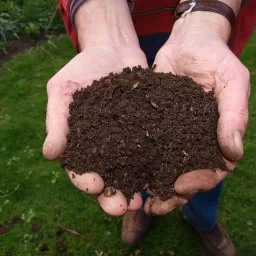Managing Tomatoes Pests and Disease Without Using Heavy Chemicals
Tomatoes cop their fair share of pests and diseases and this can seriously effect how much fruit they produce. Climatic conditions play a large part in whether the pest or disease is going to become a problem. The best way to manage the build up of pests and diseases is to practice Integrated Pest Management (IPM) and crop rotation. By using these two methods, you don’t need to rely on heavy chemicals. IPM is using physical/mechanical, biological and chemical controls to manage pests and diseases. Crop rotation falls into the physical/mechanical group, as each season you plant the tomatoes in a different bed.
Viruses, bacteria and fungal diseases can enter the plant through wounds such as broken stems or through the roots or be transferred by sap sucking insects such as aphids, white fly, mites and mealy bugs. Pathogens can also be spread by wind and water.
Tomatoes are a summer/warm climate crop and are susceptible to fungal diseases that require humid conditions to thrive. The main fungal diseases are wilt and mildews. These diseases multiply by spores. Ideal conditions are: warm temperatures, moist air and a host plant such as a tomato. Spores can also survive in the soil, dead plant material and weeds growing near by.
Diseases
The signs of wilt are the lower leaves become brown and papery, dry looking and hang down, while the top growth still looks healthy. The lower leaves look like they need water. But the disease interferes with the roots ability to take up moisture. Watering actually makes the problem worse.
There are two types of mildews – downy and powdery. Downy mildew is characterized by white spots or patches on the upper and lower parts of the leaf. Powdery mildew’s characteristics are the fungal spores start out as small white dots that gradually spread over the entire leaf. It also affects buds, stems and fruit.
Pests and Diseases Control Measures:
- Buy healthy seeds and seedlings
- Practice crop rotation
- Pick up any leaves on the ground and destroy them, don’t compost them
- In winter spray the soil with Lime Sulphur – it kills fungal spores
- Don’t water from overhead as it can spread the fungal spores
- Water at ground level
- Plant grafted tomatoes as they are more resistant to pests and diseases
- Make sure there is plenty of sunlight
- Make sure the air is able to circulate around the plants
- Don’t keep feeding the plants with nitrogen, it creates soft and sappy leaf growth which is susceptible to attack
- Make your own fungicide. See below for recipe.
- Apply fungicides early in the morning
Fungicide Recipe:Mix one level teaspoon of bicarb soda into one litre of water. Add one litre of skim milk and a pinch of Condy’s Crystals which you can get from a produce agent (someone that supplies to horse owners). Shake thoroughly and spray over leaves. Only lasts in the bottle about 1-2 days.
Blossom-End Rot is a physiological disease caused by lack of calcium or too much nitrogen. In regards to the calcium deficiency, it does not mean that the soil is in lacking calcium. There may be calcium in the soil, but the pH may be wrong, preventing the plant accessing it. Tomatoes like a soil with a pH between 5-7. If your soils pH is acidic and below 5, then the plant may not be able to take up the calcium. To overcome this problem, an application of garden lime is advised. This will raise the soils pH and enable the plant to access the calcium that is present in the soil. When you are preparing the soil to plant your tomatoes, a good handful of lime per plant will help.
Pests
Tomatoes also attract their fare share of pests such as white fly, aphids, mealy bugs and mites. These are sap sucking insects and some have the ability to multiply asexually. That means the female is able to produce lots of clones without the male. It is important to control these pests because they can transfer viruses and bacterial diseases.
I recommend that you use a low toxic sprays such as Long Life Pyrethrin or a home made garlic or chilli spray. These types of sprays are called contact sprays and wash off easily after rain or being watered. They are not absorbed into plants vascular system like systemic sprays such as Confidor. If you read my article Vegetable Pests and Diseases you will find recipes to make your own pesticides. A sign that your tomato is being attacked by sap sucking insects is the leaves curl or bubble or go a silvery colour.When applying contact sprays it is important to actually spray it onto the pests, so I suggest you look under the leaves because that is where many pests cohabitate.
Some cultural tips to growing healthy tomatoes
- Put the plant in the full sun
- Check the soils pH and alter accordingly if it needs it
- Don’t over plant the garden bed
- Prepare the soil properly before planting with compost, blood and bone, potash and animal manure
- Put shade cloth over if the day is going to be extremely hot
- Water in the morning
The good thing about growing your own tomatoes is that you control what pesticides you apply to them. If you decide to use heavy chemicals then it is vital you obey the with holding period directions. The with holding period is the number of days you must wait until you can harvest the produce.
Growing your tomatoes is very rewarding but you do have to manage the pests and diseases, otherwise you will find that your efforts are being wasted. Observing and understanding what tomatoes require is the secret to growing healthy tomatoes. Integrated Pest Management and crop rotation are very valuable tools that if you put into practice, will reward you will delicious tomatoes without using nasty heavy chemicals.
tomato plant
#Managing #Tomatoes #Pests #Disease #Heavy #Chemicals
Will be pleased to have you visit my pages on social networking .
Facebook page here.
Twitter account is here.
Linkedin account here
Post byBedewy for info askme VISIT GAHZLY




